Overview
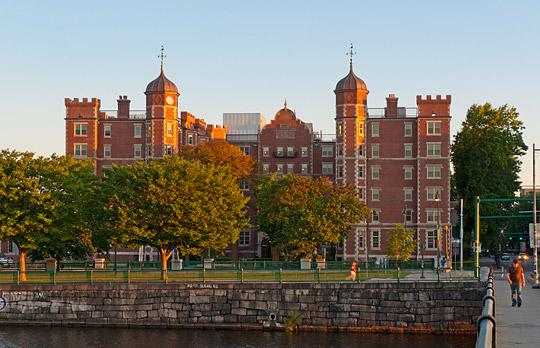
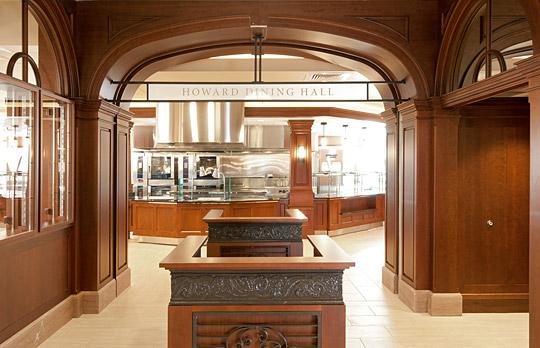
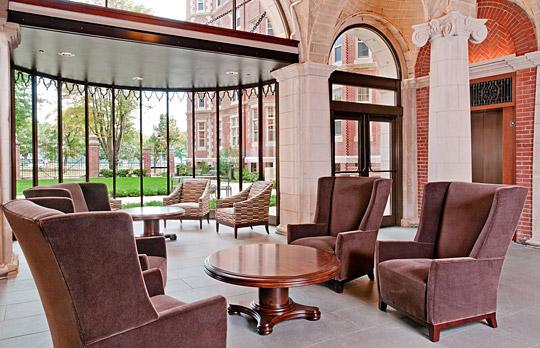
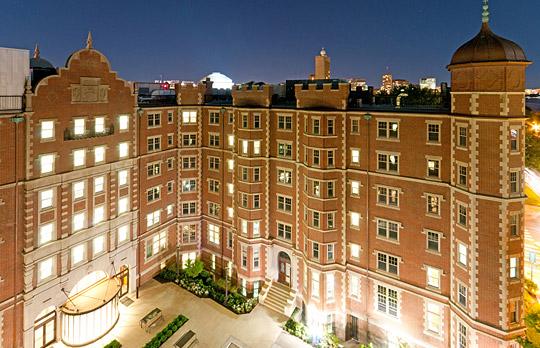
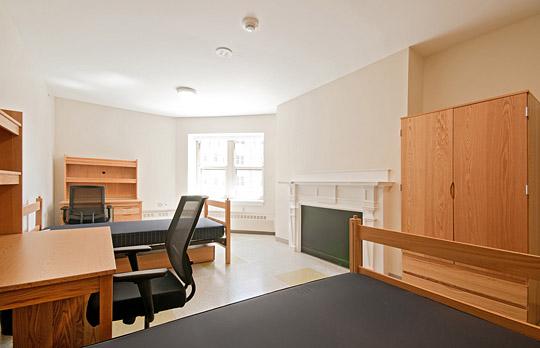
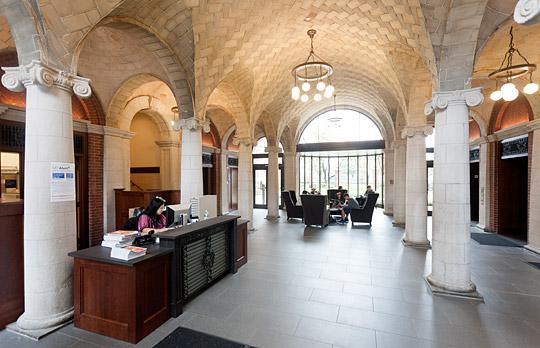
Status
Completion Date
Themes and priorities
Opened in August of 2011, Fariborz Maseeh Hall accommodates 460 students and adds a vibrant undergraduate living and learning community to MIT’s residential options. The renovated facility includes the new state-of-the-art Howard Dining Hall, a gorgeous space that encourages informal interactions, provides a full meal plan for residents, and offers dining for other members of the larger MIT community. This pleasant gathering place is strategically located near the geographic center of campus.
Originally built in 1901 as Riverbank Court, the building began life as a hotel with apartments. Purchased in the late 1930’s by MIT and converted into a graduate residence hall, the building was later named Ashdown House in honor of its first and long-time housemaster, Avery Ashdown. Its recent extensive renovation was made possible in part by a generous donation from alumnus Fariborz Maseeh ScD ’90. In recognition of his gift, MIT renamed the undergraduate residence hall in his honor. Maseeh Hall added capacity that enabled MIT to restore its undergraduate student population to about 4,500 students.
The renewed and renovated building – which received LEED Gold certification – supports the Institute’s environmental goals and contains many sustainable features. These include heat recovery methods in the HVAC system, energy efficient lighting, and sustainable finish materials. The construction waste management plan resulted in 93% of waste being recycled and diverted from landfills. The project earned preservation awards from the Cambridge Historic Commission, as well as The Society for College and University Planning (SCUP)/AIA-CAE.
Image credits
Details
Address
Renewal Status
Use
Project Team
Design/Build firm: Shawmut Design and Construction, Boston, MA, with Miller Dyer Spears, Boston, MA
MIT team: Bernard Richard, Sonia Richards, and Travis Wanat
Scope
Design Features
- Seven stories
- Interior renovated and architectural features restored
- Upgraded building envelope
- All new windows
- Masonry cleaned and joints re-pointed
- Limestone features repaired or replaced
- Roof parapets re-built and seismically braced
- Two copper cupolas replaced
- The iconography of the building was retained with appropriate choices made in the interior furniture, lighting and fixtures
- The Lobby of Maseeh Hall features a Guastavino tiled vault
Sustainable Design Elements
- Total re-use of historical building
- Construction waste management plan that resulted in 93% of waste being recycled and diverted from landfills
- Heat recovery methods in the HVAC system
- Metered electrical usage by floor can be utilized by the occupants for energy savings competitions
- Low emitting materials including adhesives, sealants, and paints
- Cooking grease to be collected and used for bio-fuel
- Food disposal by-products to be used for compost
- LEED Gold certification
Awards
Excellence in Architecture for Restoration or Preservation, Merit Award, Society for College and University Planning (SCUP)/AIA-CAE, 2012
Preservation Award, Cambridge Historical Commission, 2010
News+Video
In the News
- One dorm, a world of culture; Maseeh Hall introduces late night cultural study breaks; MIT News, September 21, 2012
- The first semester of Maseeh Hall, An insider’s look at the first few months of a new dorm; The Tech, February 7, 2012
- Maseeh Hall formally dedicated; President Hockfield calls it 'central achievement' of Campaign for Students; MIT News, October 14, 2011
- New dorm on the block, Institute welcomes recently renovated Maseeh Hall to the neighborhood with community event; MIT News, September 16, 2011
- MIT’s newest dining hall has a new name: The Howard Dining Hall, MIT Division of Student Life, April 6, 2011
- A look back at Old Ashdown in all its (quirky) glory; Before it was Maseeh Hall, and before it was W1, this historic building was home to generations of graduate students; MIT News, February 28, 2011
- There's no place like Maseeh Hall; Students in the Phoenix Group get a behind-the-scenes look at what will be their new home next fall; MIT News, October 18, 2010
- MIT alumnus gives $24M to expand the Institute’s undergraduate student body; Fariborz Maseeh cites pressing need for MIT graduates; MIT News, September 8, 2010
- Students to play role in shaping future of W1; MIT News, December 12, 2007

